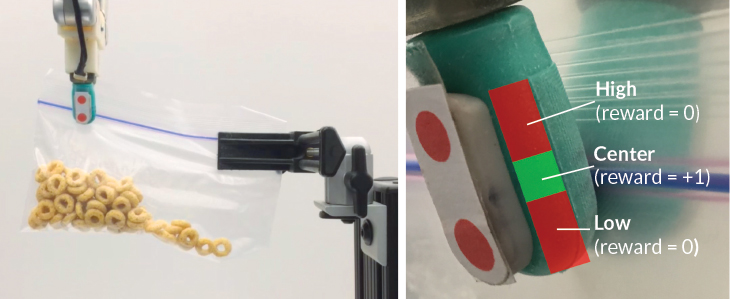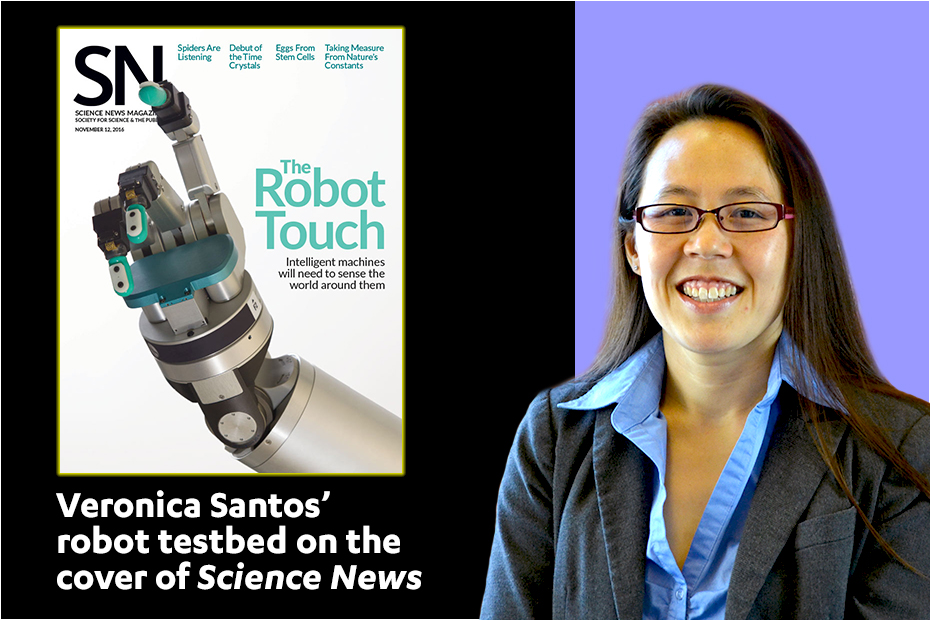UCLA MAE Associate Professor Veronica Santos was interview in the recent Science News article “For robots, artificial intelligence gets physical,” and her robot testbed from the UCLA Biomechatronics Lab was featured on the cover.
Excerpted from the article:
You can’t just tell the robot to move its fingertips horizontally along the zipper, says Veronica Santos, a roboticist at UCLA. She and colleague Randall Hellman, a mechanical engineer, tried that. It’s too hard to predict how the bag will bend and flex. “It’s a constant moving target,” Santos says.
So the researchers let the robot learn how to close the bag itself.
First they had the bot randomly move its fingers along the zipper, while collecting data from sensors in the fingertips — how the skin deforms, what vibrations it picks up, how fluid pressure in the fingertips changes. Santos and Hellman also taught the robot where the zipper was in relation to the finger pads. The sweet spot is smack dab in the middle, Santos says.
Then the team used a type of algorithm called reinforcement learning to teach the robot how to close the bag. “This is the exciting part,” Santos says. The program gives the robot “points” for keeping the zipper in the fingers’ sweet spot while moving along the bag.
“If good stuff happens, it gets rewarded,” Santos says. When the bot holds the zipper near the center of the finger pads, she explains, “it says, ‘Hey, I get points for that, so those are good things to do.’ ”
She and Hellman reported successful bag closing in April at the IEEE Haptics Symposium in Philadelphia. “The robot actually learned!” Santos says. And in a way that would have been hard to program.
It’s like teaching someone how to swing a tennis racket, she says. “I can tell you what you’re supposed to do, and I can tell you what it might feel like.” But to smash a ball across a net, “you’re going to have to do it and feel it yourself.”
Learning by doing may be the way to get robots to tackle all sorts of complicated tasks, or simple tasks in complicated situations. The crux is embodiment, Santos says, or the robot’s awareness that each of its actions brings an ever-shifting kaleidoscope of sensations.

Both: V. Santos/UCLA
…
Santos sees a future, 10 to 20 years from now perhaps, where humans and robots collaborate seamlessly — more like coworkers than master and slave. Robots will need all of their senses to take part, she says. They might not be the artificially intelligent androids of the movies, like Ex Machina’s cunning humanoid Ava. But like humans, intelligent, autonomous machines will have to learn the limits and capabilities of their bodies. They’ll have to learn how to move through the world on their own.

